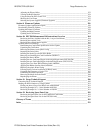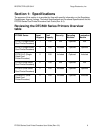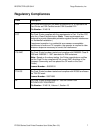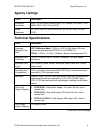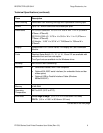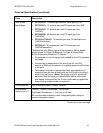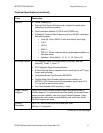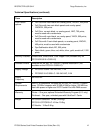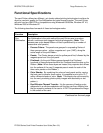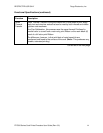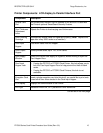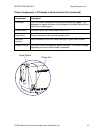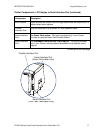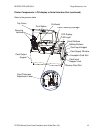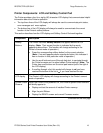
RESTRICTED USE ONLY Fargo Electronics, Inc.
DTC500 Series Card Printer/Encoders User Guide (Rev. 6.0)
13
Functional Specifications
The card Printer utilizes two different, yet closely related printing technologies to achieve its
direct-to-card print quality for Dye-Sublimation and resin thermal transfer. The card Printer
will print from any IBM-PC® or compatible running Windows® 95/98/Me, Windows NT 4.0,
Windows 2000 or Windows XP.
The following describes how each of these technologies works:
Function Description
Dye-
Sublimation
Dye-Sublimation is the print method the card Printer uses to produce
smooth, continuous-tone images that look photographic. (Note: This
process uses a dye-based Ribbon roll that is partitioned by a number of
consecutive color panels.)
Process Colors: The panels are grouped in a repeating Series of
three process colors - yellow, magenta and cyan (YMC), along the
entire length of the print Ribbon.
Panels: The Printer always prints the yellow panel first, followed by the
magenta panel and the cyan panel.
Printhead: As the print Ribbon passes beneath the Printhead,
hundreds of thermal elements within the Printhead heat the dyes on the
Ribbon. (Note: When these dyes are heated, they vaporize and diffuse
into the surface of the card. A separate pass is made for each of the
three color panels on the Ribbon.)
Color Shades: By combining the colors of each panel and by varying
the heat used to transfer these colors, it is possible to print up to 16.7
million different shades of color. (Note: This blends one color smoothly
into the next, producing photo-quality images with absolutely no dot
pattern.)
Dye-Diffusion Thermal Transfer: It is the process of heating a dye
suspended in a cellulous substrate until the dye can flow, diffusing into
the dye receptive surface of the card or InTM. This produces the image
in the surface of the card.
Continued on the next page



